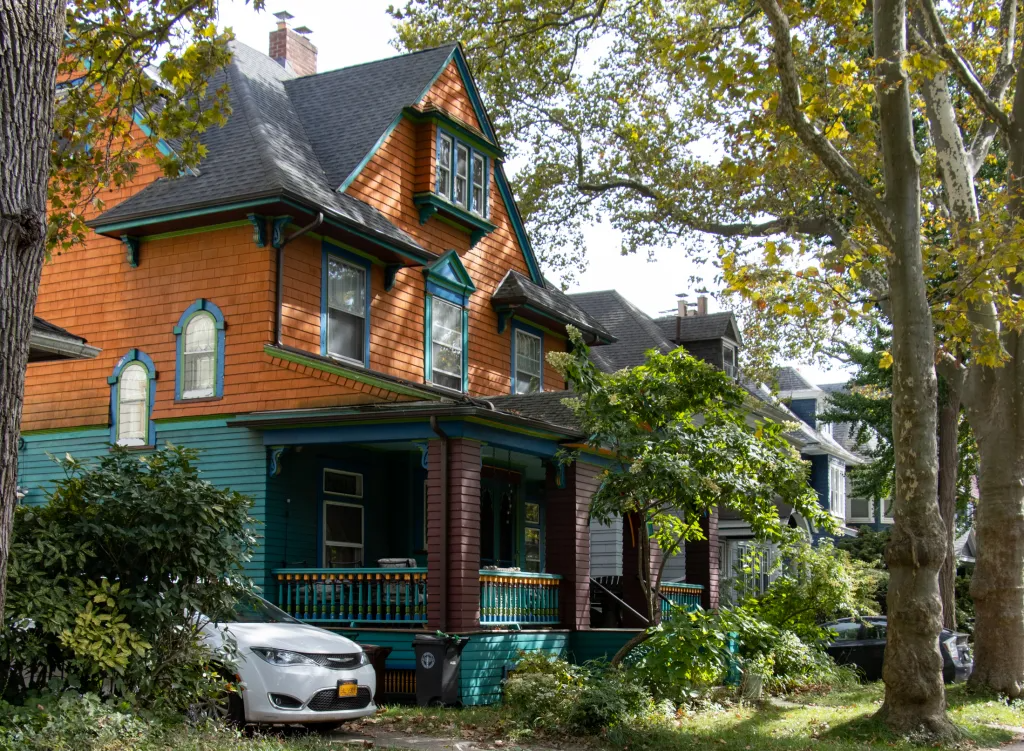Eminent Domain Spreads to Williamsburg Waterfront
How would you feel if you’d been smart enough to buy waterfront property in Williamsburg before Dan Doctoroff knew the difference between Bedford and Broadway only to have your property snatched away from you by the city? Probably something like the two groups of investors who are in the process of getting pushed out by…


 How would you feel if you’d been smart enough to buy waterfront property in Williamsburg before Dan Doctoroff knew the difference between Bedford and Broadway only to have your property snatched away from you by the city? Probably something like the two groups of investors who are in the process of getting pushed out by the forces of eminent domain to make way for a possible soccer and softball field. This time around, the city isn’t claiming blight; instead it’s invoking the concept of public good. The land, which is bounded by Kent Avenue, the East River, North 9th Street and North 10th Street in Williamsburg, is just to the north of the recently-opened East River State Park between North 8th and North 9th streets and lies at the southern end of the proposed Bushwick Inlet Park that the city’s had on the drawing boards for the past couple of years; the parcel represents phase 1 of the park project. The grand vision for the park extends north from North 9th Street about six blocks to the far side of the Bushwick Inlet. This is far from a done deal, though, according to The Real Deal, which first reported the ED action: Three land owners in the center of the footprint—TransGas, CitiStorage and the Greenpoint Monitor Museum—aren’t taking the city’s overtures lying down. “[The land] was donated and we are not giving it up,” said Janice Lauletta-Weinmann, president and co-founder of the Greenpoint Monitor Museum, told TRD. “It is a disgrace.” One remaining issue to be resolved in the North 9th Street case is price: Typically the city pays a token amount to the owners upfront and then litigates the final amount. The market value is probably somewhere between $100 and $200 per buildable square foot, according to Massey Knakal. It’ll be interesting to see what the final price is. Do you think this situation merits the use of eminent domain?
How would you feel if you’d been smart enough to buy waterfront property in Williamsburg before Dan Doctoroff knew the difference between Bedford and Broadway only to have your property snatched away from you by the city? Probably something like the two groups of investors who are in the process of getting pushed out by the forces of eminent domain to make way for a possible soccer and softball field. This time around, the city isn’t claiming blight; instead it’s invoking the concept of public good. The land, which is bounded by Kent Avenue, the East River, North 9th Street and North 10th Street in Williamsburg, is just to the north of the recently-opened East River State Park between North 8th and North 9th streets and lies at the southern end of the proposed Bushwick Inlet Park that the city’s had on the drawing boards for the past couple of years; the parcel represents phase 1 of the park project. The grand vision for the park extends north from North 9th Street about six blocks to the far side of the Bushwick Inlet. This is far from a done deal, though, according to The Real Deal, which first reported the ED action: Three land owners in the center of the footprint—TransGas, CitiStorage and the Greenpoint Monitor Museum—aren’t taking the city’s overtures lying down. “[The land] was donated and we are not giving it up,” said Janice Lauletta-Weinmann, president and co-founder of the Greenpoint Monitor Museum, told TRD. “It is a disgrace.” One remaining issue to be resolved in the North 9th Street case is price: Typically the city pays a token amount to the owners upfront and then litigates the final amount. The market value is probably somewhere between $100 and $200 per buildable square foot, according to Massey Knakal. It’ll be interesting to see what the final price is. Do you think this situation merits the use of eminent domain?
City Takes W’burg Waterfront Properties for Park [The Real Deal] GMAP





Lawyer chick @ 12:56 – I hope your not practicing law – if you are you better go back and hit the books again, your understanding of ED, the Kelo case and its precedents leaves alot to be desired.
OK, not to go all “lawyer” chick but here’s the reason why use of ED in this case is “bad”.
Up until a recent Supreme Court decision, municipalities wanting to use ED had to prove blight. Since Kelo v. New London in 2000, the court approved this “public good” business. The problem is that term is incredibly broad. I understand that no one will shed a tear when evil developers are being deprived of their property rights (w/out just compensation, which I think is the point here). But what happens when the city decides that middle-class apartments aren’t “good enough” and we should kick people out and build luxury condominiums instead? (That’s pretty much what happened in Kelo, btw.) They can justify it by saying that the public good being done is an increased tax base, as well as jobs for all those poor schlepps cleaning the rich peoples’ apartments.
Public good doesn’t sound so good anymore, huh?
12:26. That simply isn’t true. ED demands that these disputes (which would probably be negotiated out anyway with the threat of ED over the landlord’s head) be litigated in court. Do you actually have some caselaw which says the city can talk half a building a leave the otherhalf open to the elements and not provide compensation? Now it is true that governments seize parts of front yards to widen streets and may not thus pay for the whole house, etc. But your example is screwy.
And the government – it is us, after all. After all the New London news (supreme court case which upheld use of ED), many governments have rethought the use of ED.
You know what, this is such a no-brainer I am taking my no brain to another thread.
This is a fantastic use of eminent domain. I wish they’d do it for Domino, too.
I think I’m voting for Ron Paul.
Those of you that seem to relish the idea of the use of ED to condemn a developers private, paid-for property, posit this.
Suppose that you are a property owner on the periphery of this new ‘industrial park.’ The government has condemned only 2-3 feet of your lot…only your building/improvements cover the entire lot. The government would only pay you for the 2-3 feet of wall and space taken from you, NOT for the loss of the entire building or the fact that you have constructively been dispossessed.
Do not think for a second that “just compensation” and the wisdom of the courts will save the day.
This new brand of Eminent Domain is scary and dangerous. Sometimes we have to see beyond the emotion and see what the real issue is. The government can wield this power to take from you whatever it is that “they” feel compelled to take.
I agree that eminent domain is inappropriate for a sports stadium. Hence, I propose that once Atlantic Yards is built, we seize it via eminent domain and destroy it in order to build something for the public good – like train yards and a condo building with one occupant.
Yes, I read “The Power Broker”. Overrated, poorly-written book. But what do you expect from a journalist? A historian would have done a more competent job.
11:32 – huh?
If the State couldnt use ED (period) then either the owners would not sell OR they’d force the State to pay so much $ that a park would not be feasible.
and fyi as the value of land surrounding public amenities rises, their value is reassessed and taxes are thereby increased.
“it is ALWAYS developers who benefit the most by taking advantage of the bordering properties to the new civic improvement.”
So — the developer in Williamsburg should have no complaint about the taking for a park because he’s benefit in the end? /sarcasm